There are no words to articulate how delicious, decadent, and versatile qashta is. Qashta, if you haven’t experienced it before, is Middle Eastern clotted cream. You typically see it used in Arabic desserts, but in Aleppo, they even have it for breakfast (because why not?). One of my favorite breakfasts in Aleppo was zlebiye (paper-thin fried dough) stuffed with qashta topped with cinnamon sugar and chopped Aleppan pistachios. This is not the kind of breakfast you have every day.
Side note about zlebiye: the zlebiye in Aleppo is very different than the zlebiye anywhere else in the Middle East. Most zlebiye are prepared by frying relatively thick pieces of dough, but in Aleppo, the zlebiye is paper-thin. So thin you can read through it. I never met anyone who makes this version at home, even in Aleppo. I used to buy my zlebiye from Halawiyat Diab, a popular sweet shop close to my apartment in Aleppo. After months of asking begging, one of the bakers shared the recipe with me. Unfortunately, it didn’t pan out. The dough never became stretchy enough to create that paper-thin pastry that makes Aleppo’s zlebiye so special. All I have to remember zlebiye by is my memory and this behind-the-scene video I shot at Halawiyat Diab in 2011:
In the video, you can see some zlebiye are “plain” (topped with cinnamon sugar and chopped Aleppan pistachios), but in the 1:05 minute mark, you’ll see the ones I was referring to, stuffed with qashta. My mouth waters every time. While I don’t have a successful recipe for zlebiye yet (I haven’t lost hope), qashta is an important component to many Middle Eastern desserts, which brings us to today’s post. This is a key recipe you’ll want to reference anytime a dessert calls for qashta. You can also use qashta to take desserts you already know and love to the next level: think waffles topped with qashta or qashta French toast! The good news is that qashta is incredibly easy to make and only requires four ingredients: whole milk, vinegar, cornstarch, and orange blossom water.
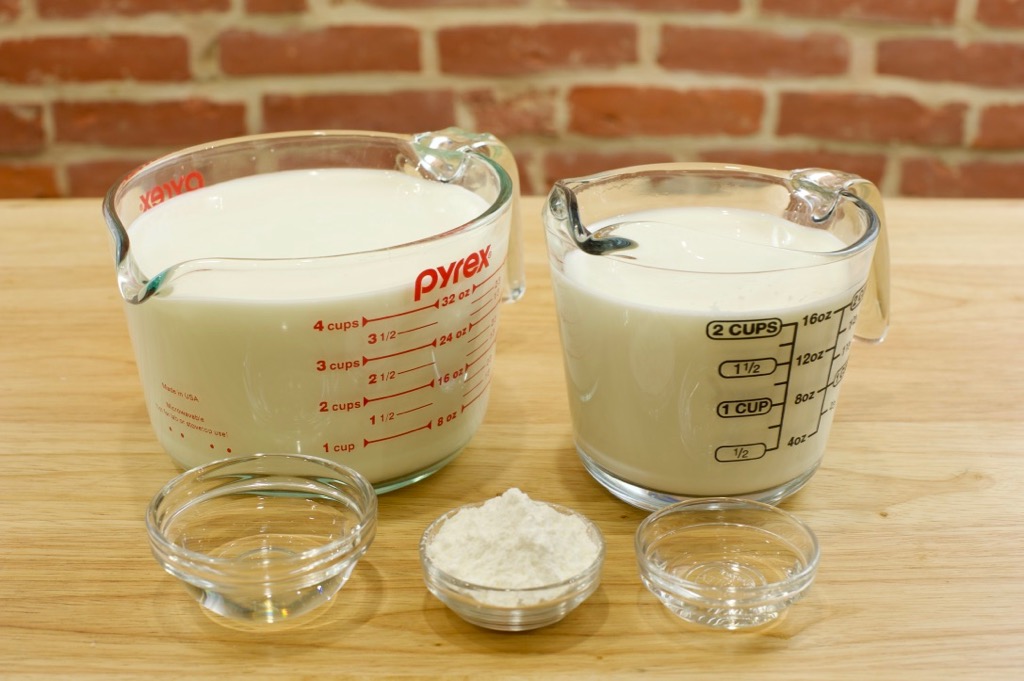
You’ll notice that qashta doesn’t have any sugar added. That’s because most Middle Eastern desserts, like baklava, use a simple syrup infused for sweetness. If you’re going to use qashta on a non-traditional dessert, I recommend either sweetening it with a little bit of sugar or topping it with honey, which is what I do later in this post.
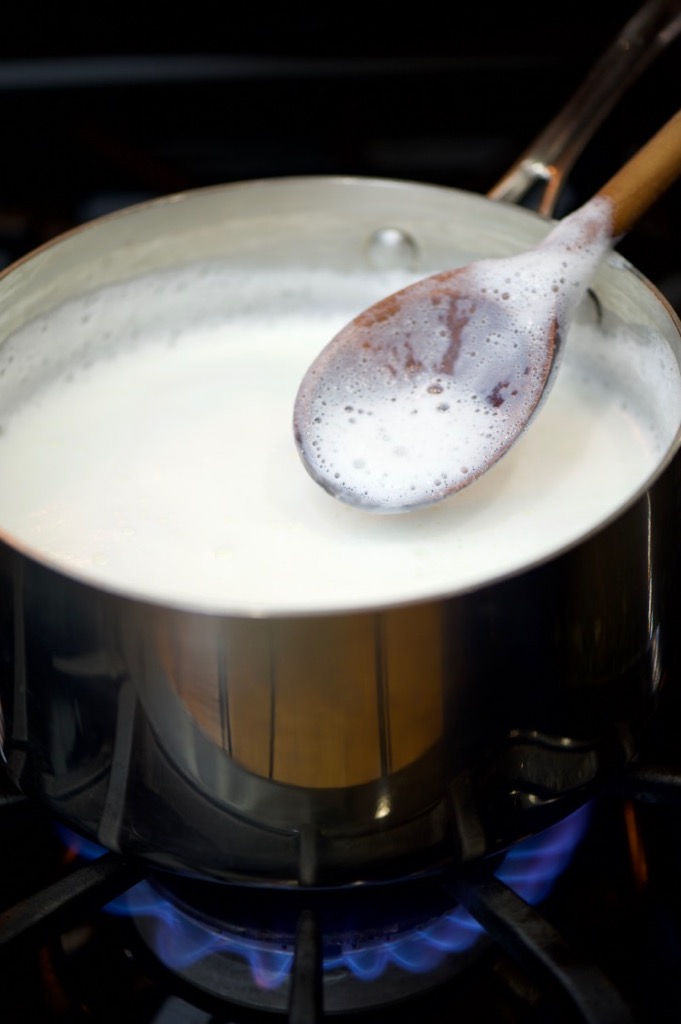
This recipe uses milk twice. The first one is for clotting. To clot milk, you’ll want to gently bring it to a simmer.
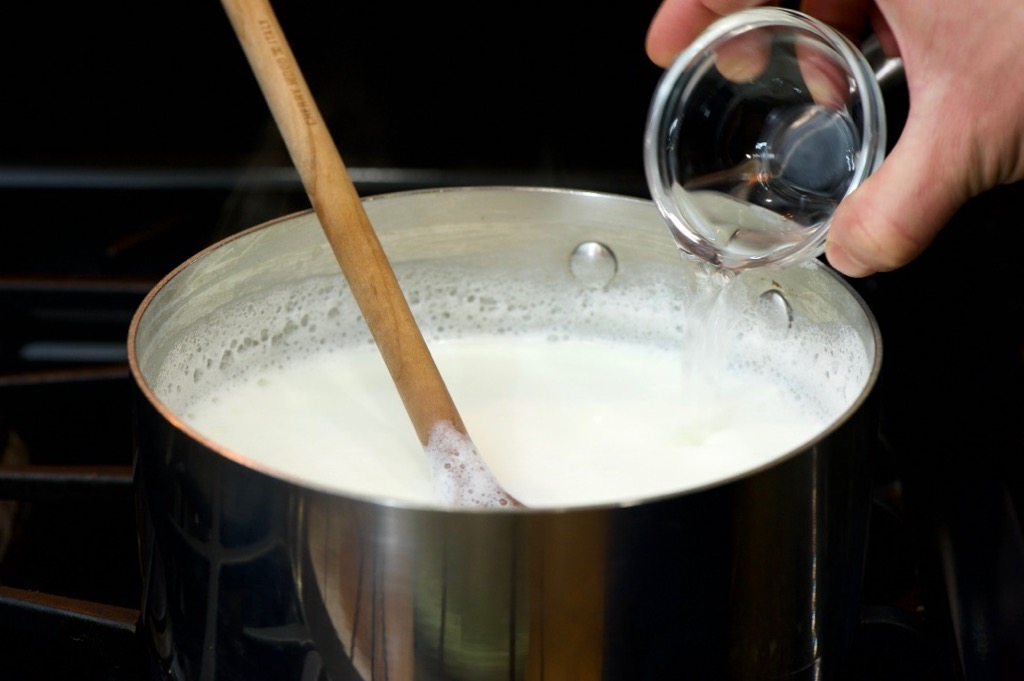
Once the milk is frothy and at a gentle simmer, you’ll want to stir in a little bit of white vinegar. The acid in the vinegar will clot the protein in the milk. Don’t worry, qashta is not sour or acidic. The purpose of the vinegar is to separate the curds from the whey. Some recipes online call for lemon juice, but the acidity level of lemons can vary, so I stick to simple white vinegar for a more consistent result. You can turn off the heat at this point and stir gently.
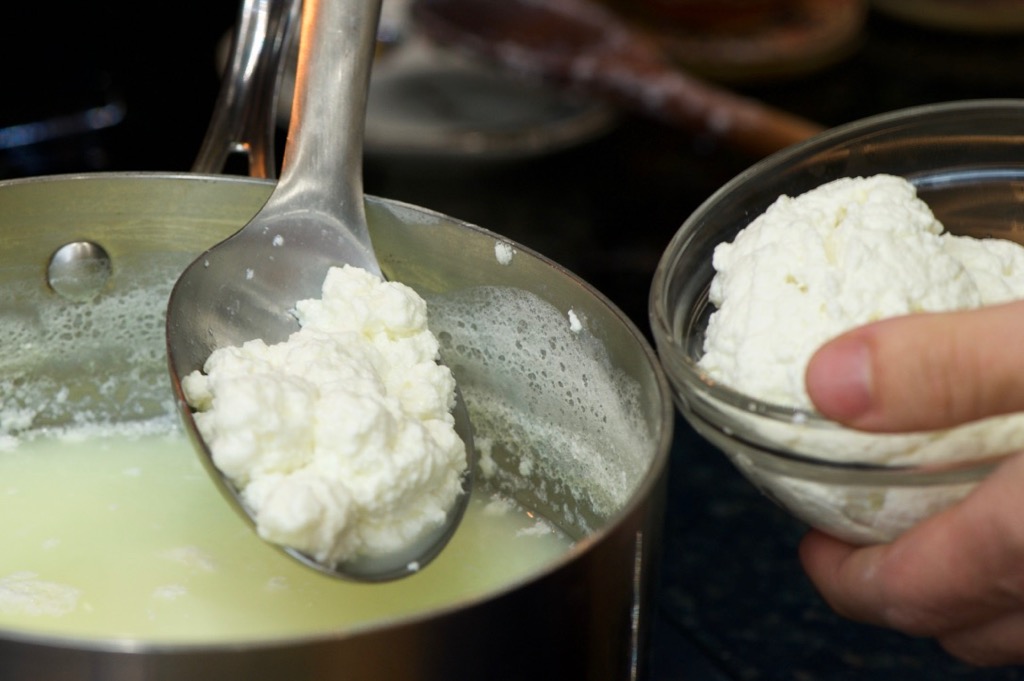
With a slotted spoon, you’ll want to gather the curds that have separated from the whey. The clotted curds will form the foundation for the qashta.
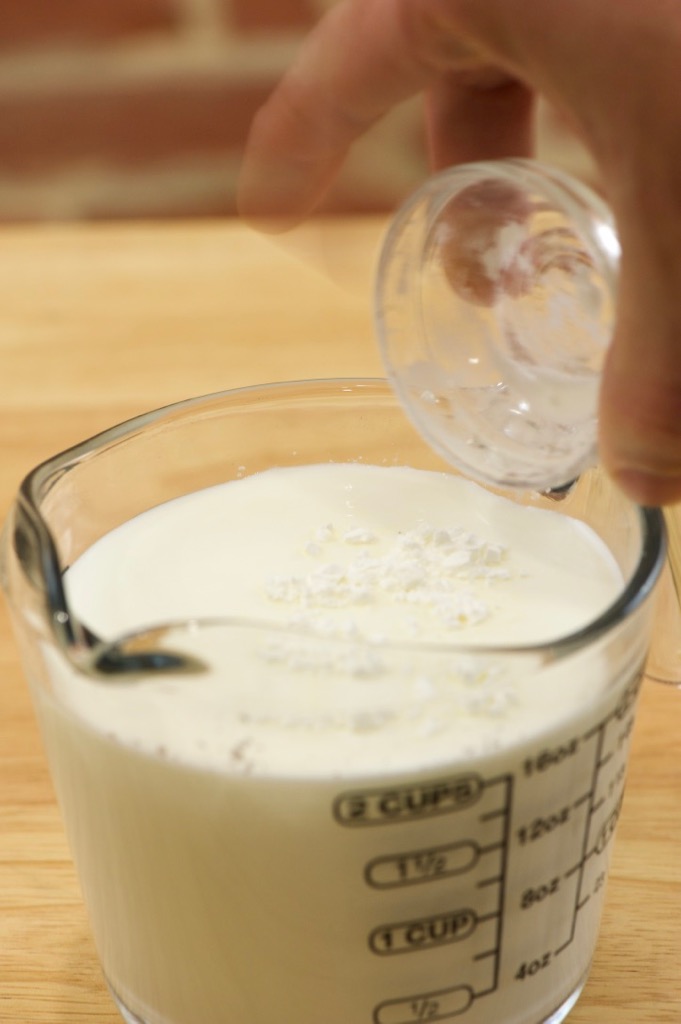
To make the curds creamy, we next need to prepare a rich base. The rich base is made up of whole milk thickened with cornstarch. Since cornstarch only dissolves in cold liquids, it’s important to dissolve the cornstarch in cold milk. Once the cornstarch is dissolved, transfer it to a sauce pan over medium heat. The milk base will be fully thickened once the milk begins to simmer.
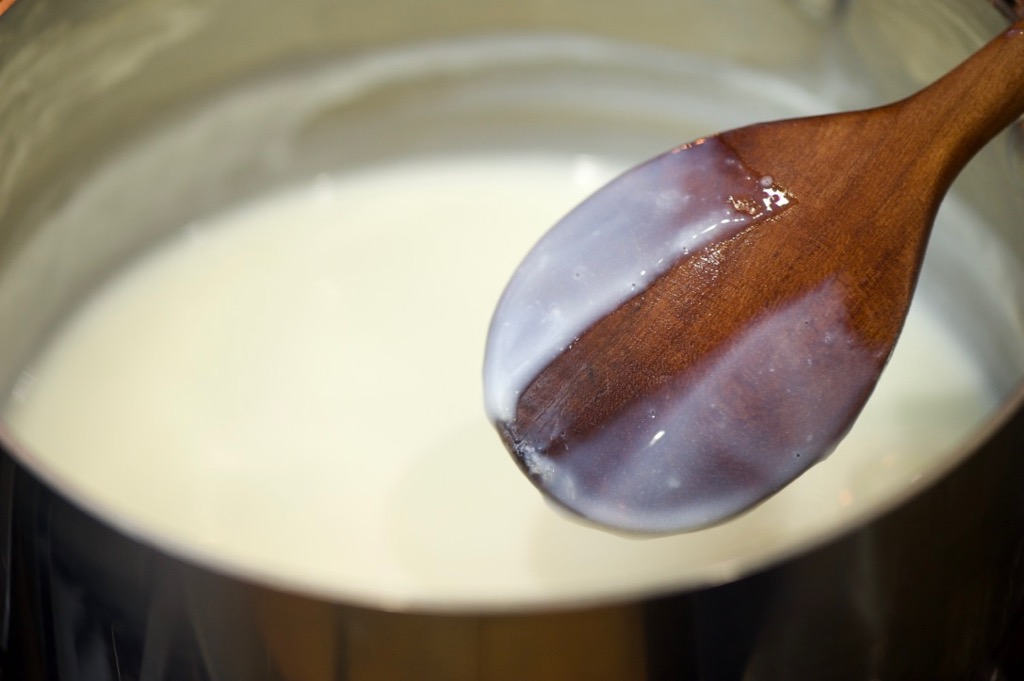
Once the milk comes to a simmer, test the thickness by running your finger along the backside of your wooden spoon. It should be thick enough to form a streak down the back of the spoon.
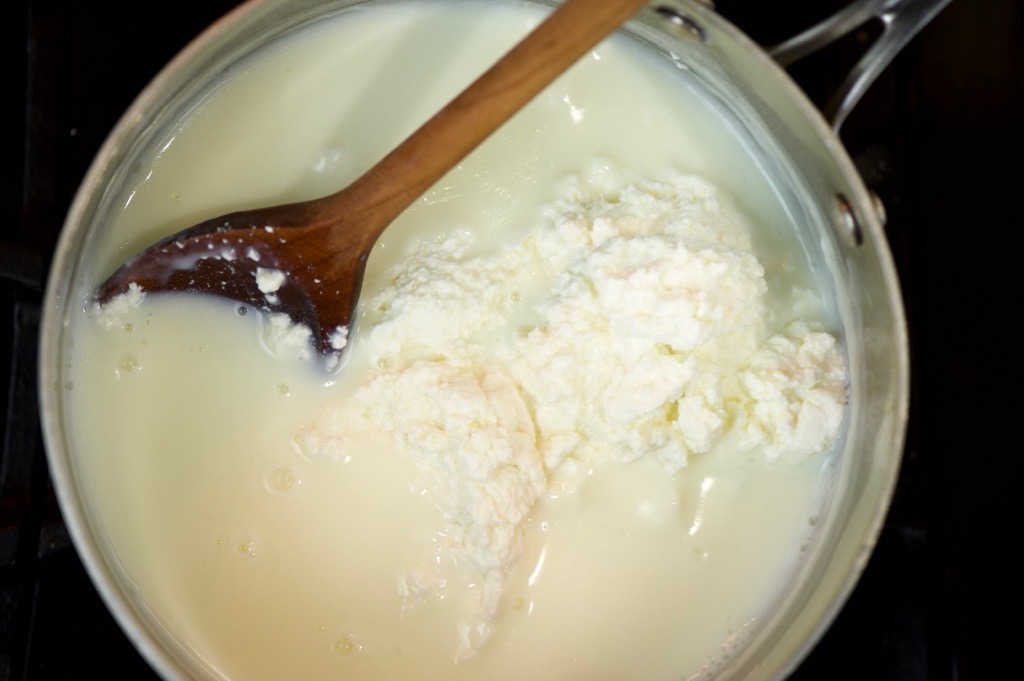
The qashta comes together by mixing the clotted curds from the first step with the creamy base we just made. Break apart the curds with the back of your wooden spoon in order to incorporate them into the creamy base. Depending on how long the clotted curds sat out, this may require more work. If the clotted curds are not coming apart, a hand mixer can make the job easier.
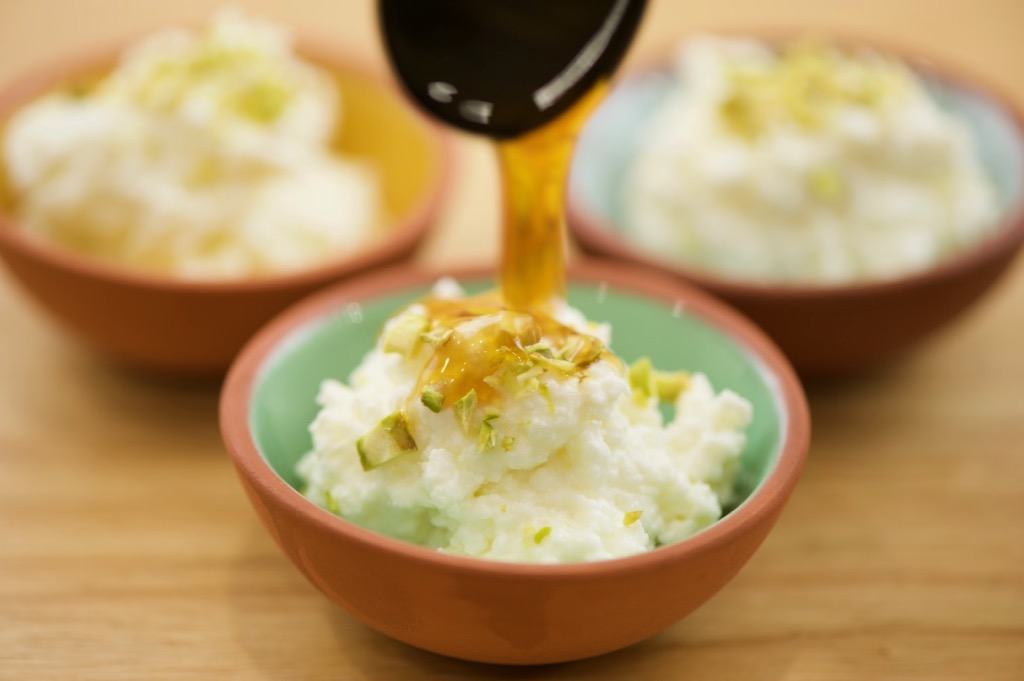
Qashta
yields ~4 cups
Components
- 2 liters whole milk
- 2 Tbsp white vinegar
- 2 Tbsp cornstarch
- 2 tsp orange blossom water
Putting them all together
- Bring 1.5 liters of milk to a gentle simmer in a medium sized saucepan.
- Lower heat to medium low, add vinegar, and gently stir for one minute.
- Turn off heat and continue stirring gently to encourage the milk to clot.
- Using a slotted spoon, collect the clotted pieces. Try to strain most of the liquid (no need to make it dry, but you don’t it too wet either). Set aside.
- Dissolve the cornstarch in remaining 1/2 liter of milk.
- In a saucepan over medium heat, bring milk and cornstarch mixture to a simmer, stirring occasionally so that the milk does not burn.
- Reduce heat to low and mix in the clotted curds. Continue stirring and use the back of a wooden spoon to until curds are broken up and suspended in thickened milk. If the clotted curds are difficult to break apart, a hand mixer can help.
- Remove from the heat and stir in orange blossom water.
- Cover with plastic wrap and refrigerate until ready to use.
Note: Qashta or clotted cream is not generally sweetened because it gets incorporated into Arabic desserts that are already sweetened. If you plan on eating qashta as a snack or incorporating it into non-traditional desserts, I recommend sweetening it with a little sugar (while mixing the cornstarch with the milk) or topping the finished qashta with honey or simple syrup.
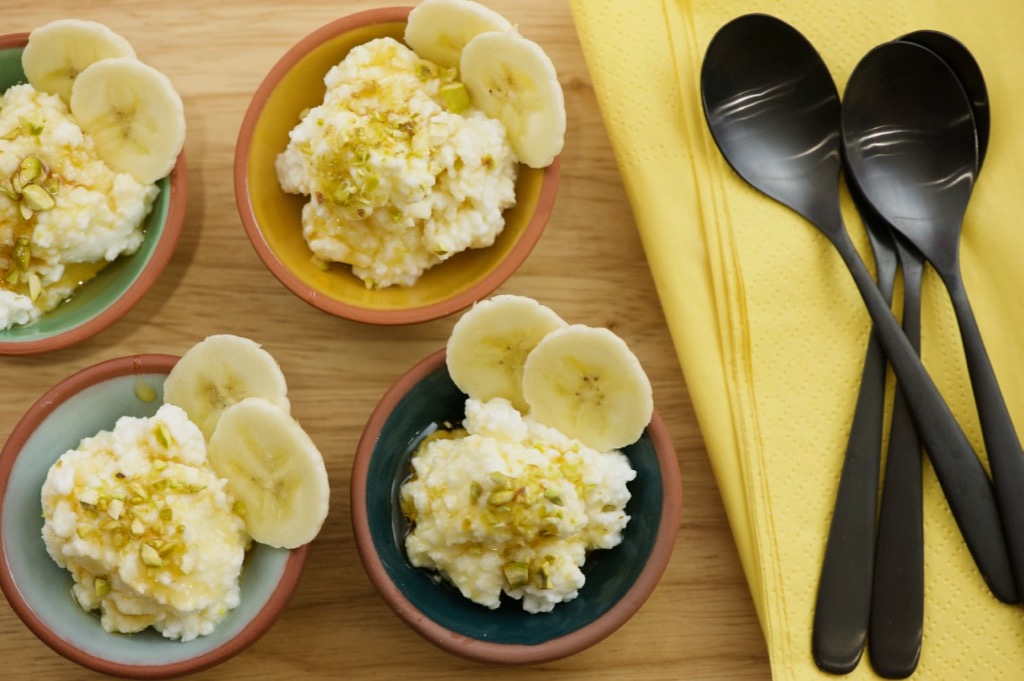

Can this base be added to an ice cream machine?
Hi Kristen! I’m working on a qashta ice cream recipe. I haven’t tried it, but I don’t recommend adding this base to an ice cream machine. It should probably be more liquid before adding to an ice cream machine.
Dear Antonio
You have maybe found the answer for the ashta Ice cream since 2018 ? I would like to tell you that I prepare it with sahlab, (the original sahlab used by our ancestors is orchids bulb, now it’s a protected flower and everybody use the “gomme arabique” witch works very well. I prepared a sahlab bouza very similar to ashta bouza for a culinary french tv show, it’s on youtube and unfortunatly in french. If you want the creamy taste you add cream to the whole milk, I know that it’s unhealthy, I prepare it also with almond milk (I do it myself with whole almonds or almonds powder).